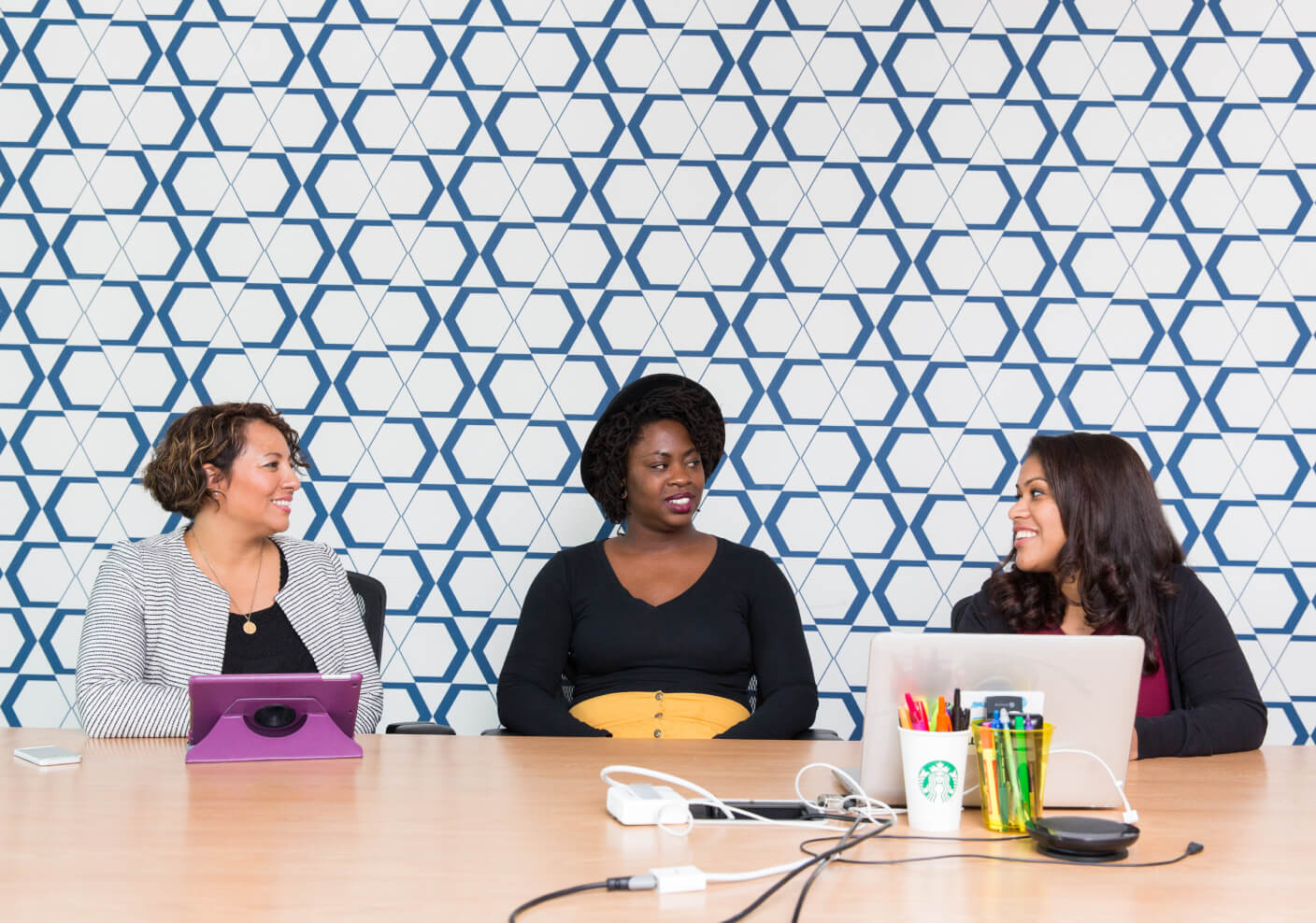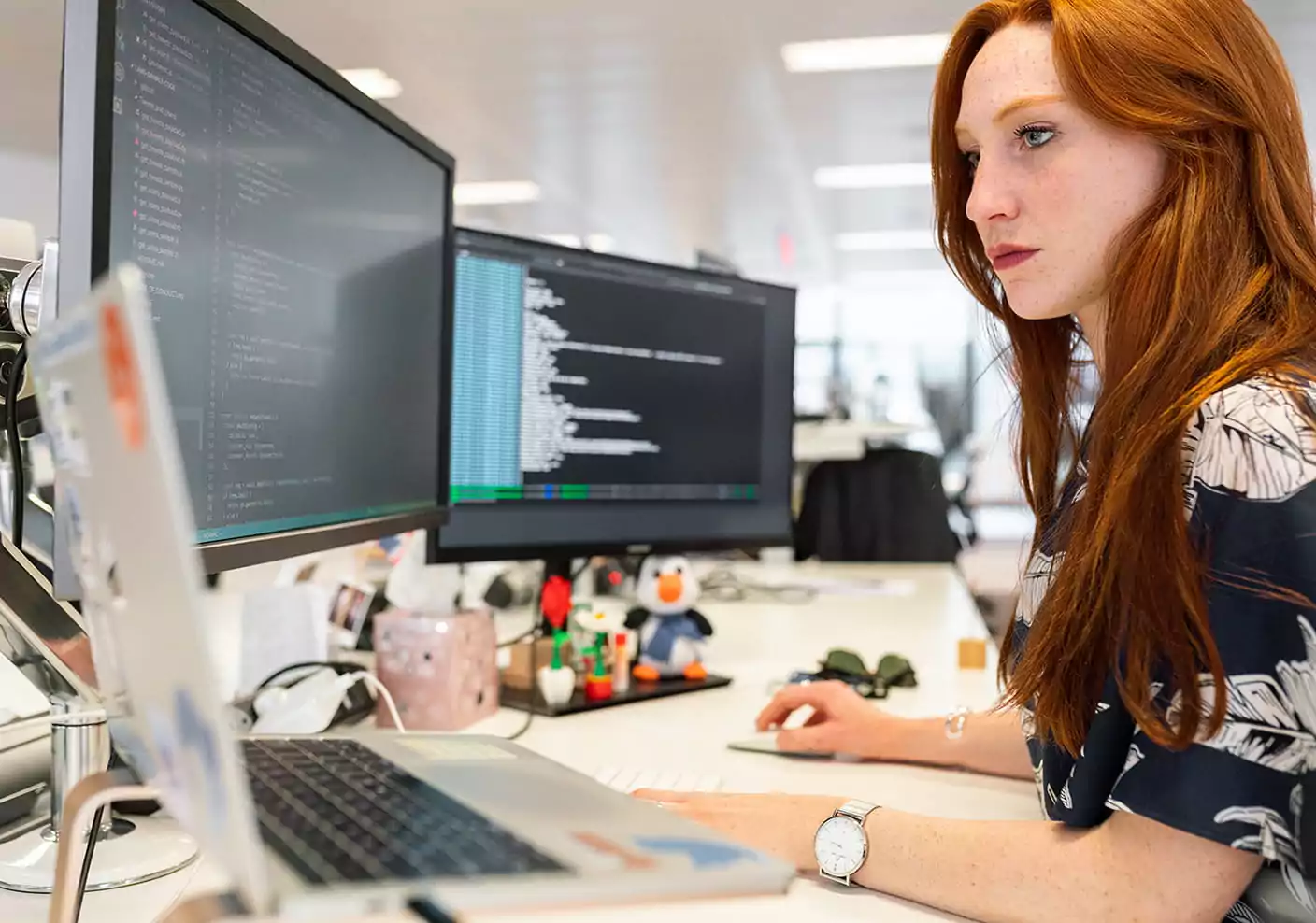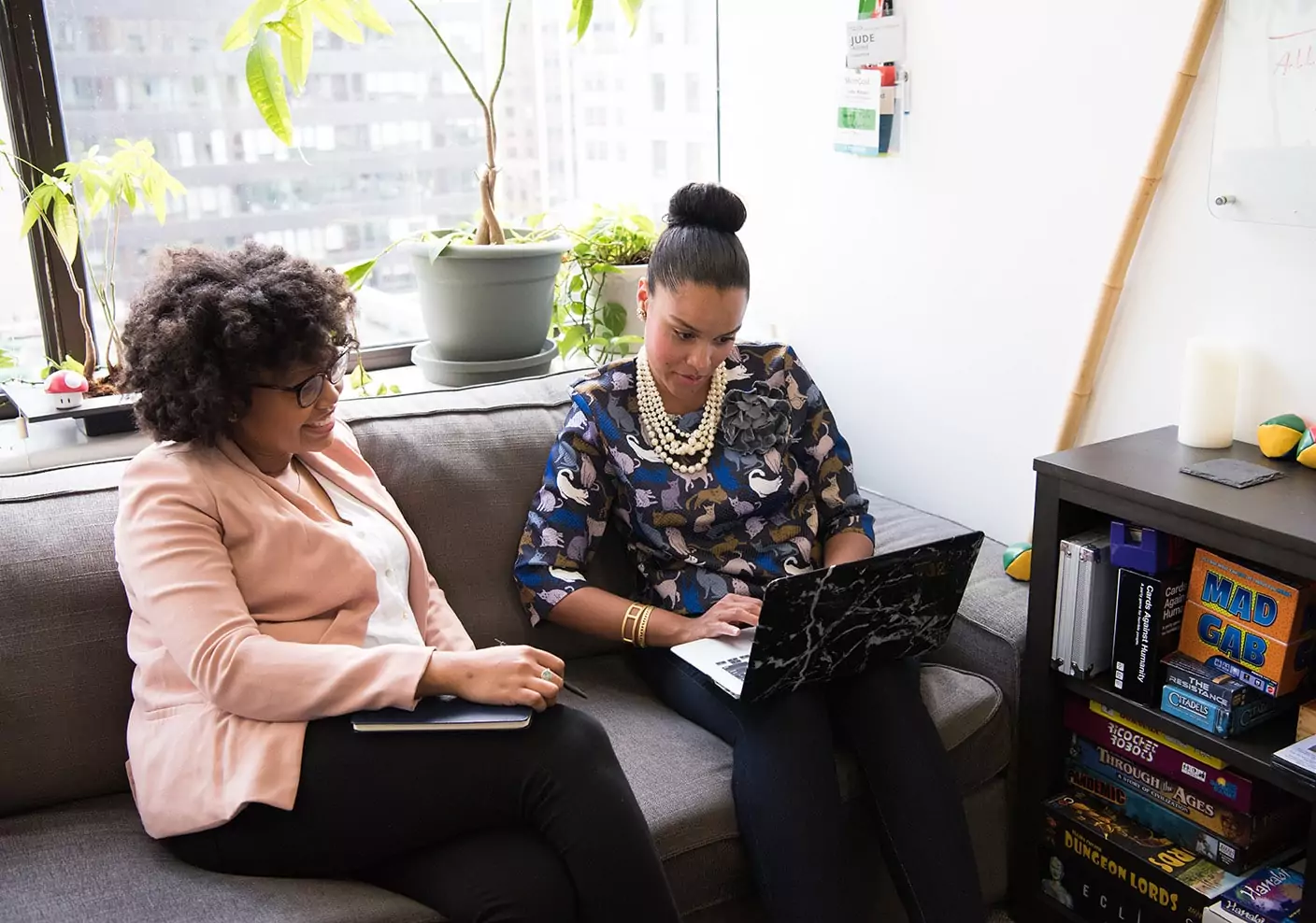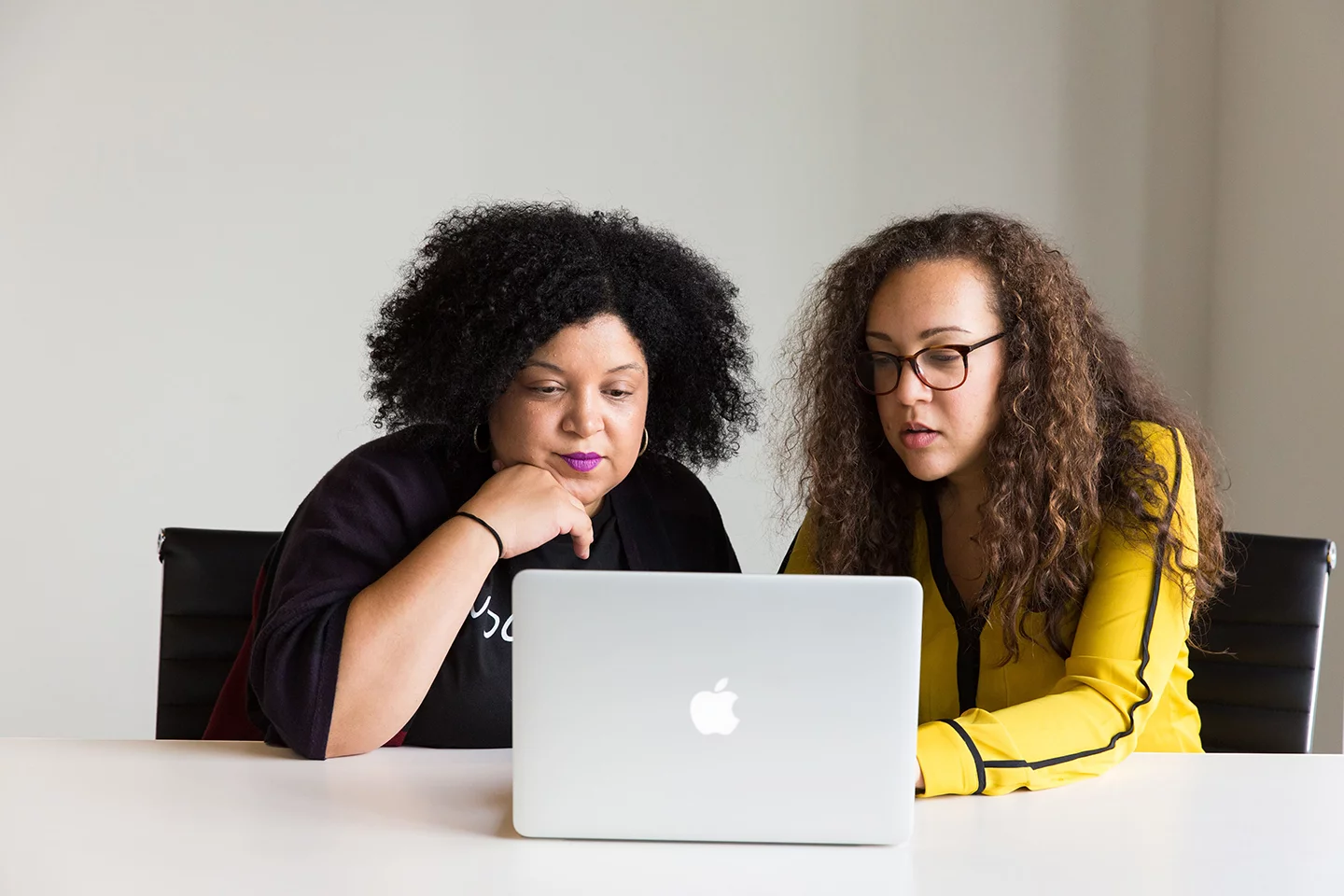Our 2021 Future of Work Virtual Roundtable Series recently continued with a session entitled “Finding Your Courageous Edge: Micro-Practices for a More Equitable and Inclusive Workplace.” Grace Michel and Briana Bellamy of UC Berkeley Robertson Center for Intercultural Leadership took us through this talk aimed at helping us gain tools for interrupting biases and assumptions in our daily team and employee interactions and discovering how diverse communication and work styles show up in our virtual workplaces.
Below is an edited excerpt of their conversation. To experience Mursion’s virtual reality simulations and see for yourself how this platform can support your own business to achieve its leadership development and other business goals, schedule a demo today.
Bellamy: What do we mean when we are talking about equity in the workplace? For us, equity in the workplace looks like people from all different backgrounds having the same opportunity to be in positions of leadership, to achieve their goals, and to have influence on their work. This requires skills, so that people from all backgrounds can really be included and respected. Today, we’re specifically focused on skills for courageous dialogue, on topics that can be difficult, and maybe can be polarizing or triggering for some folks.
We’re asking the question of how do we navigate those skills and conversations at an interpersonal level so that we can bring those courageous skills and practices to create structures and policies that foster more equity and inclusion? We’re going to be focusing on our own personal skills, so that when we go into spaces with people who have different view points, we can have effective conversations. We also recognize that people are coming to these conversations from very different life experiences related to their identities, related to their experiences of racism and oppression, and to power dynamics.
People are coming to these conversations from very different life experiences related to their identities, related to their experiences of racism and oppression, and to power dynamics.
The skills that we are exploring today are for everyone, whether you’re trying to be a better ally or accomplice, or if you have been a target of racism or discrimination. Though depending on where you’re coming from, you may be relating to and practicing these different skills from different angles and approaches.
We want to talk fist about the brain. Why is it so difficult to have these courageous dialogues? What’s happening in our brains and bodies when someone brings up a viewpoint that contradicts our own, or maybe when you see someone doing something that’s offensive, or maybe when you’re told that you’ve done something that’s offensive, what’s happening in our brains and our bodies? One thing that is happening is often that it’s triggering our amygdala. The amygdala is this little almond-shaped part of the brain that’s responsible for scanning the environment for threats. Often, it can see difference as a threat just the way that our brain is programmed.
When it does this, the amygdala floods our brain and takes over really high stakes. It cuts off access to our neocortex. The neocortex is the part of the brain that is responsible for creativity and collaboration, for trust-building and problem-solving. All of those skills that are really about building connection, and across difference. When we go into that amygdala hijack, that threat of difference literally gets in the way of our ability to be creative, to collaborate, to build trust, and to problem-solve.
Again, given the way that we are wired, it’s really understandable why conversations about race, in particular, bring up such strong emotions. We want to really be prepared by having a foundation of practices or skills to call on. Today, we’re going to dig into a few specific practices. We’re going to cultivate a few key practices that you can start to build into your life as individuals. We also want to emphasize that we’re calling them practices, because these are things that are ongoing, they’re not one and done. You can think of it as building a muscle.
The first, of course, is breathe. Feeling your feet on the ground, connecting to your breath, is a very quick way to start to de-escalate your amygdala. Taking a break, stepping away, be curious, asking questions and getting curious is a way to build connection, again, gets yourself out of that amygdala and and into the neocortex. Really focusing on listening to understand, noticing your feelings. Really acknowledging what you’re feeling in the moment can help to create space from it so that you can actually begin to be in choice. Appreciation, finding what you appreciate about a person or an experience, finding what the values are there. Appreciation is an immediate neocortex engagement.
That’s a really helpful, though sometimes difficult one in moments of polarity. Finding commonalities, again, seeing if you can find that common place is another one that gets you into the neocortex. Withholding judgment, seeking additional perspectives. Those are some strategies that we found that work.
Michel: We were talking here first about how our brains work. We wanted to get into some specific ways that we can start to show up courageously. The first practice, we call finding your courageous edge, the title of this session. With these discussed emotion management strategies, what we’re encouraging and getting at, is that you can actually lean into the places that feel a little bit uncomfortable, the places where it doesn’t necessarily feel easy, or it might bring up some of that activation that you have in your body, but how can you actually use that as kind of a guidepost for where there might be an opportunity to do some good work?
Related to this, we want to talk about what is the difference between a safe space and a brave space? I want to be clear, both of these spaces are important. It’s really critical to create safe spaces. Affinity groups spaces are often really important, safe spaces. What we’re getting at today with these practices, is pushing yourself into your brave space, the space where maybe it does feel a little bit uncomfortable. In this context, sometimes safe can bypass responsibility or accountability. I can say anything and I won’t be challenged.
We all have our blind spots and we are all capable of making mistakes and making messes, especially when we’re learning, especially when we’re learning about the experiences of people who are different than us. Just taking a stance of bravery in this context is encouraging you to hold yourself and others accountable in service of learning, in service of growth.
What we’re talking about with this, finding your courageous edge, is this idea that those cues your body gives you, can sometimes be a trailhead. We call this idea discomfort as a trailhead. It requires a certain level of vulnerability. In this example and in this case, that discomfort is an insight tool. It’s actually a wisdom tool.
If we can go into it and explore it, understand what the root of it is, what it’s fundamentally about, then we can work with it and we can really call on those emotional management strategies in those situations to help us navigate that discomfort. We also can think of this in relation to this concept of what we call the learning zone.
The learning zone requires some level of putting ourselves out there, some level of discomfort. Then there’s that panic zone which is that place of like, ‘This is too much for me, I’m going to put myself in a position of being shut down completely.’ We’re not asking people to go into the panic zone, but we’re talking about finding that learning zone. Especially in conversations about race, about identity, about racial justice and anti-racism, exploring the areas where you start to get uncomfortable can really serve your learning and training towards that discomfort rather than away from it.
Especially in conversations about race, about identity, about racial justice and anti-racism, exploring the areas where you start to get uncomfortable can really serve your learning and training towards that discomfort rather than away from it.
Bellamy: The practice of step up, step back. Paying attention to this is about encouraging room for all voices to be heard. You can also add a layer of awareness to this which takes power dynamics and privilege into disagreement and misunderstanding a little bit mote explicitly. An example of this is that different people are already doing different lifts, you know, carrying different burdens and weights. Step up, step back isn’t necessarily just about your personal voice but it’s also about noticing who is doing the work of the conversation and insuring that you are contributing and not taking up too much space.
For example, if you’re a person with more privilege, maybe white male and you notice that you’re taking up a lot of space and talking a lot, you may need to step back. However, if there is someone saying something that causes harm toward Black people and Black people are the only ones responding, then as a white man, you may need to actually step up as a form of allyship, accomplyship, a co-conspiratorship in that way.
Really looking to hold the step up, step back with some nuance about both how are you contributing your voice and how are you making space for other voices but also who is doing what kinds of lifts in the conversation and how are you making sure that that responsibility is also being held and distributed so that it does not all lie on one identity group? A part of this is also to honor the capacity and boundaries of different groups and identities. For example, not calling on racial ethnic minorities on your team to always be the voice of advocating for DEI and educating about DEI, knowing that that can be exhausting and outside of people’s boundaries in the way that it impacts them.
Michel: I think so much of this has to do with also digging into what are the places where I hold advantage, an unearned advantage, which is what we define as privilege. Also, another question came up, ‘How do you deal with people that don’t feel so privileged, but are continuously called that?’ That’s a very deep and complex question about a lot of things related to intersectional identities. It’s not just all about one area of privilege, but about many, maybe it’s about not only race, but about class, about gender, about ability, or disability status.
It takes a lot of, I think, self-teaching and learning to figure out what are the experiences and what are the layers that people are carrying with them in their lives of the different identities that we hold? Where do I sit in terms of some of the advantages that I hold in relation to what kind of advantages they carry in society as a whole and how does that position myself and relate to others?
The last practice that we want to highlight today is this idea of prioritizing impact over intent. Many of you maybe are familiar with this concept of intent versus impact. For example, if somebody gets called out for committing a microaggression, which we’re defining here as a statement, action, or incident, regarded as an instance of indirect, subtle, or unintentional discrimination against members of a marginalized group, such as a racial or ethnic minority, and these are behaviors that devalue, that exclude. One thing we want to emphasize is that they are often unconscious. Often unconscious, meaning that it’s not necessarily the intent of the person who commits one to do so but it still can cause harm.
That’s our definition of a microaggression. We often see that if somebody gets called out for committing a microaggression, then they become defensive. For example, a common one is saying, ‘He’s so articulate,’ about a Black man. Upon getting called out, somebody might react and say, ‘I didn’t mean anything negative by that. I was trying to give a compliment.’
Well, that reaction is a form of defensiveness that lacks ownership of the impact, ownership of the fact that actually the impact that devalues Black men by reinforcing a harmful stereotype that it’s some kind of exception to the norm to sound articulate or to be intelligent. There is a harm there, this reinforcement of a stereotype. That defensiveness is very understandable because we all have biases and we all have this thing called self-positivity bias. That’s what we call the who-me bias. It’s actually really hard to acknowledge that we make mistakes, even when it’s not our intent.
We all tend to see ourselves in a positive light, and thus defend whatever we do as well-meaning. In the context of intent versus impact, we tend to judge others on the impact of their actions on us, while we tend to judge ourselves by our intentions. Given that impact is often very different from intent, when others tell us that we’ve done something that had a negative impact on them, while we might be faced with what feels like a challenge to our perceptions of ourselves as good people.
If we want our impact to actually be positive, and our impact to lead towards better relationships, more inclusion, and just overall, better ways of working and living together, then we really need that feedback on our intent. Our self-positivity bias is likely to kick in and prevent us from doing that, making our mind run around and look for excuses and look for defenses, and often internally that can sound like that who-me kind of question.
With that, the invitation in this particular practice is to if somebody does call attention to your impact, first of all, own that impact, no matter what we meant to do. This comes along with quieting those voices inside our heads and in our bodies that want to defend and want to explain and at least recognizing them for what they are, which is sometimes a distraction from the actual work.
Then there’s another skill related to this, which is that if you are somebody who experienced a negative impact or observed somebody else experience a negative impact, there’s this idea of calling people in to awareness of their impact on others. That could be something that you’re doing as an ally, as a co-conspirator. Oftentimes, when we think about people getting called out, they’re being told, ‘What you did was inappropriate, what you did was insensitive, that was offensive,’ or there’s this canceling. That’s this calling out.
The problem isn’t necessarily that those behaviors aren’t inappropriate or insensitive, or even offensive, but the problem is that this kind of calling out may stop short of getting at the actual impact of what was said or done. The language or the behavior. Calling something offensive, in our very polarized political context, calling something offensive can make something feel a little bit more political than concrete and bring up questions about ‘Well, who gets to determine what is offensive? Who gets to determine what’s insensitive?’ That’s really a hard thing to define. What we’re suggesting is the calling people in is using something different. It’s identifying the harm.
Subscribe for the latest Mursion articles and updates.
By clicking the sign up button above, you consent to allow Mursion to store and process the personal information submitted above to provide you the content requested. View our Terms and Conditions.




